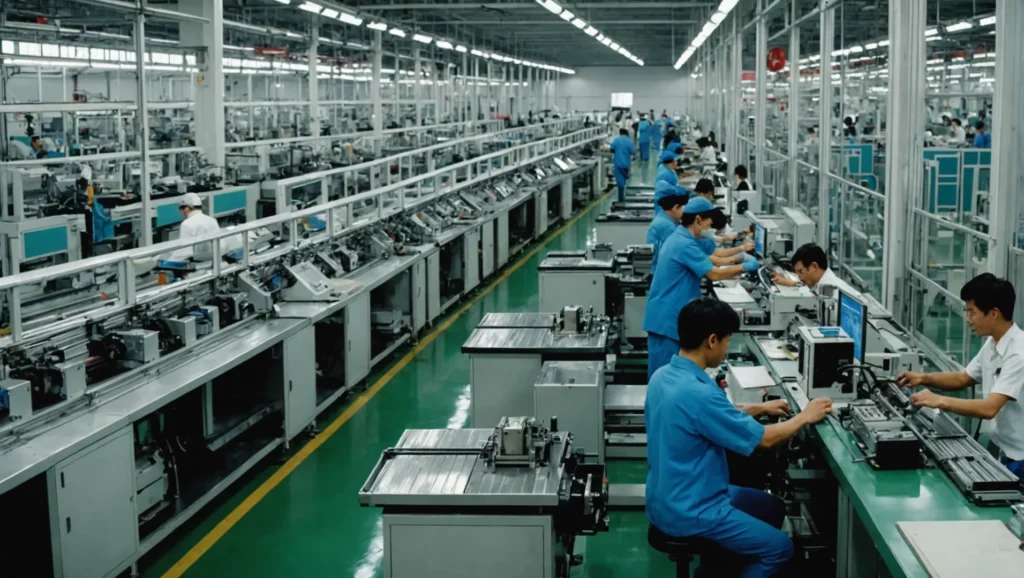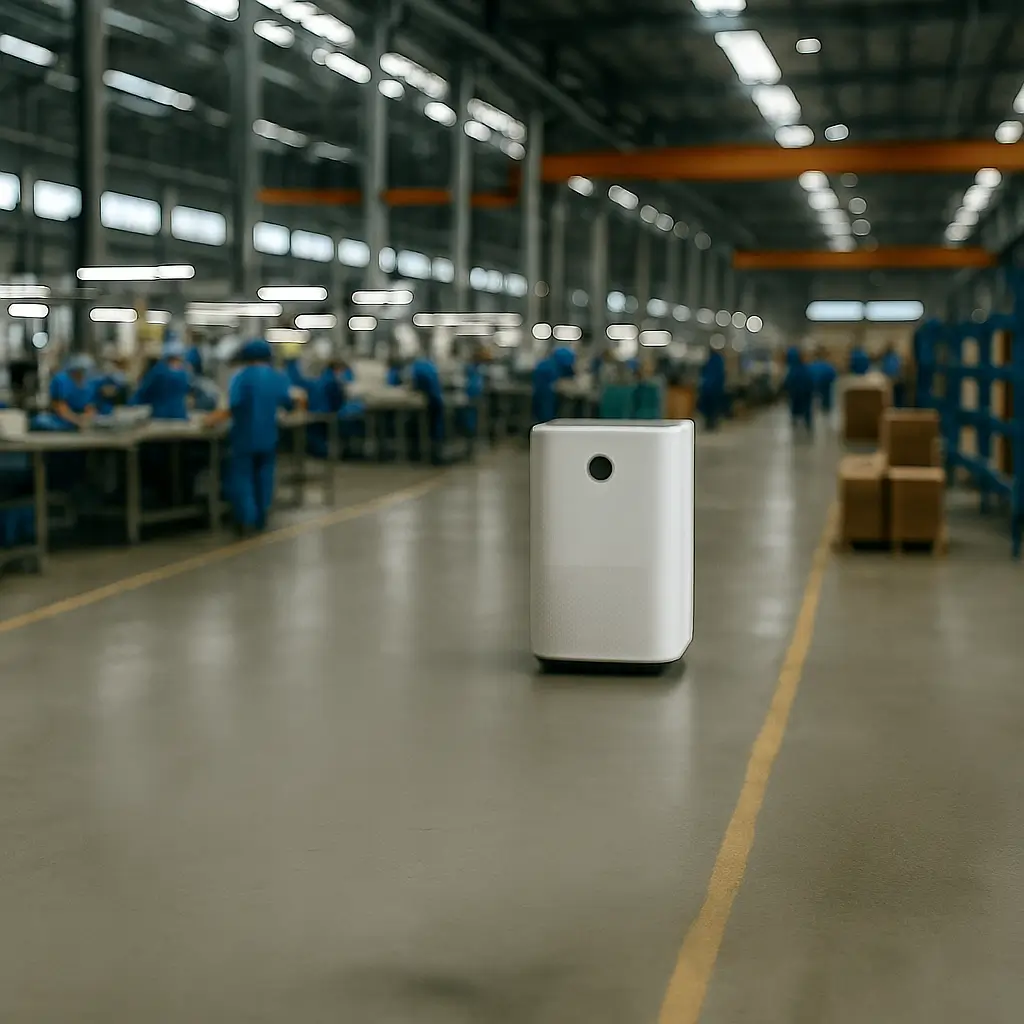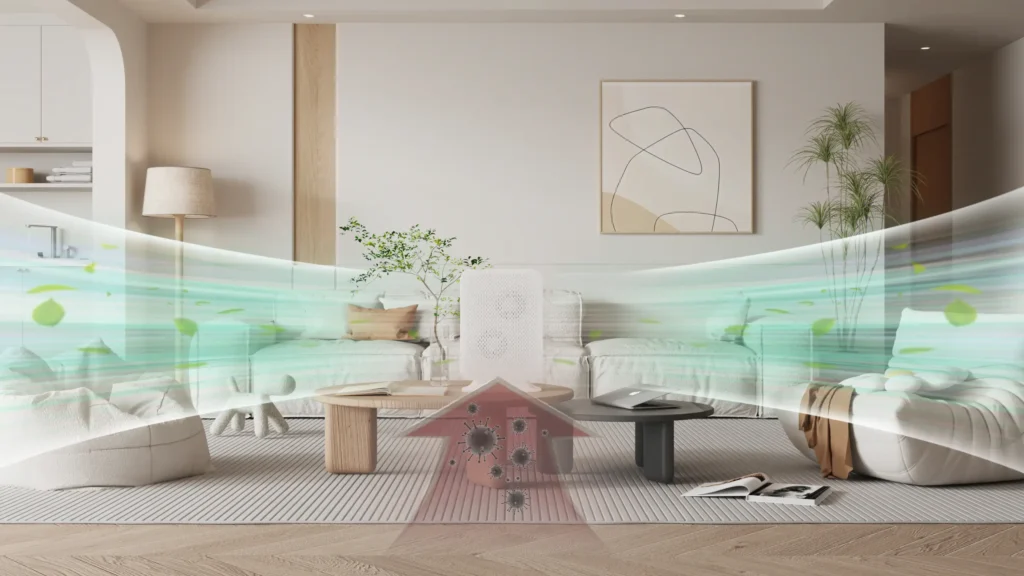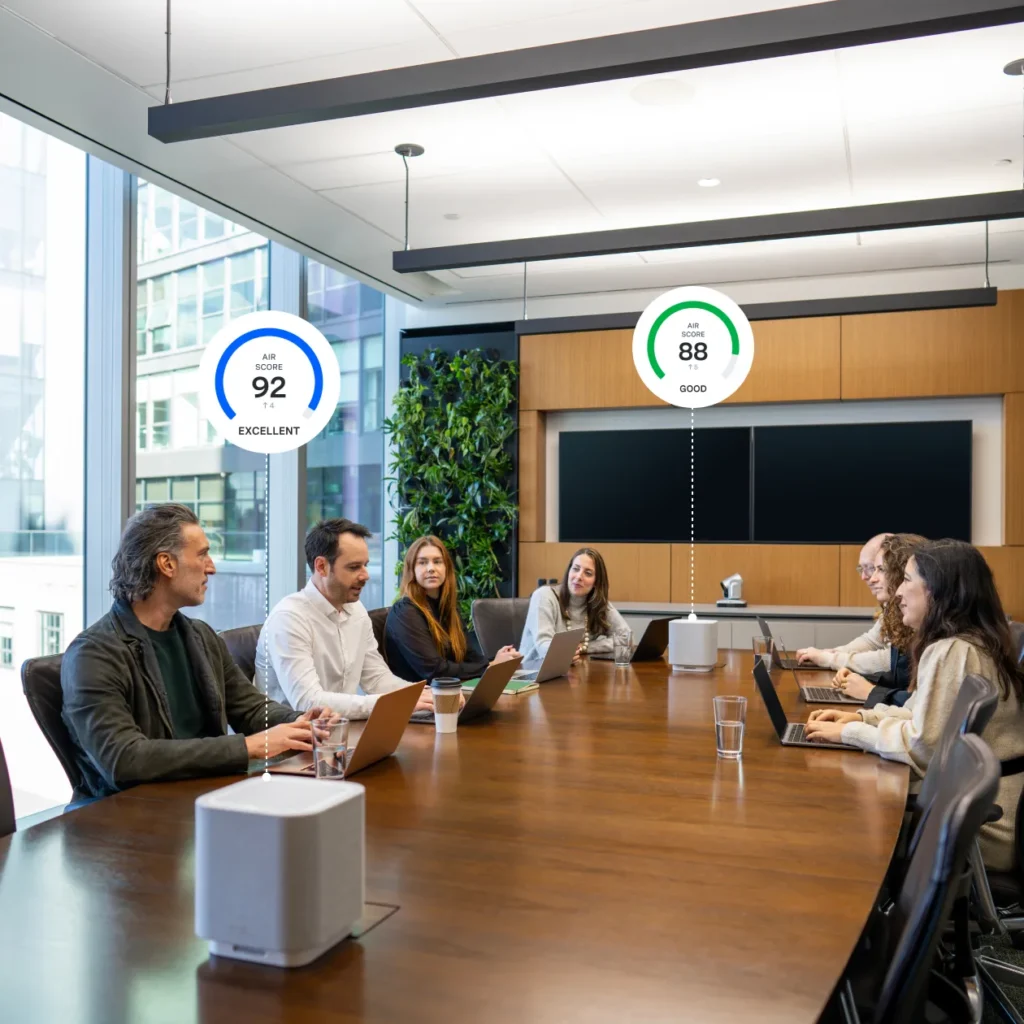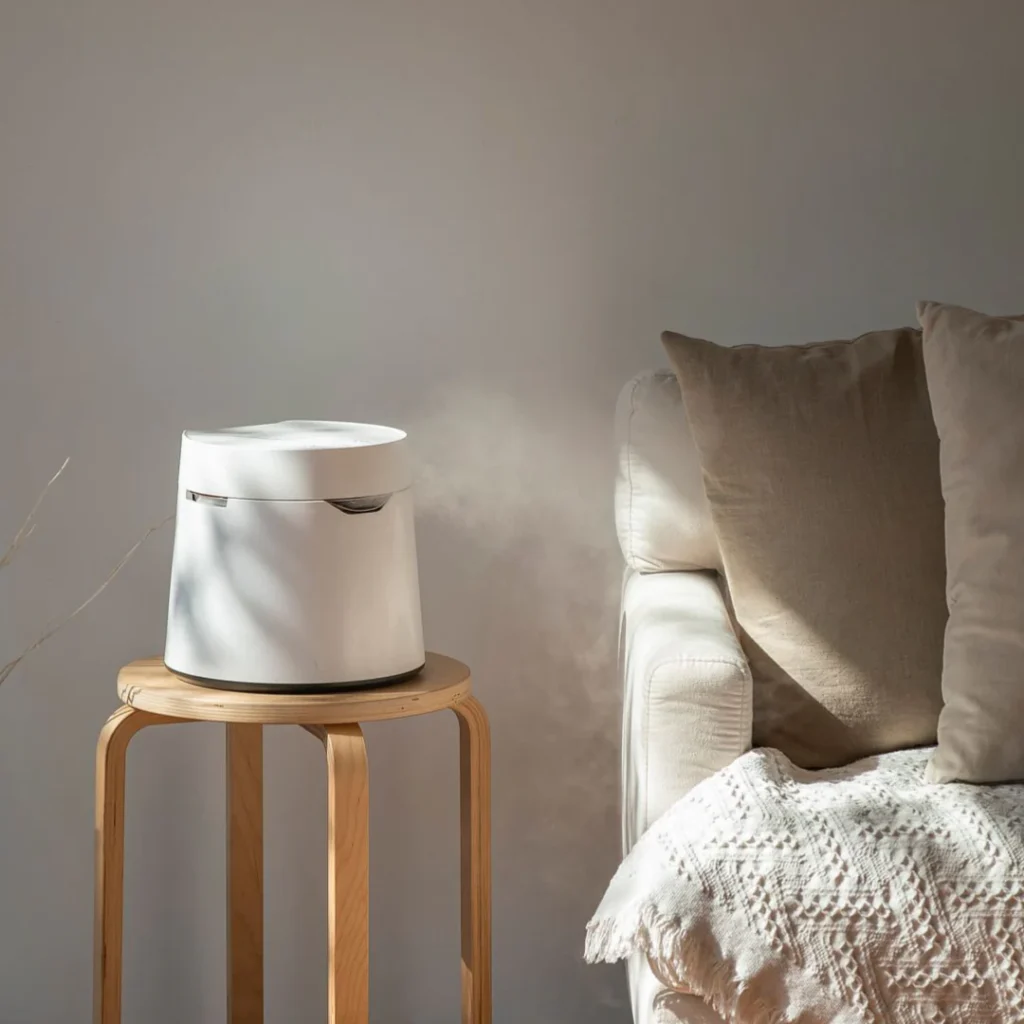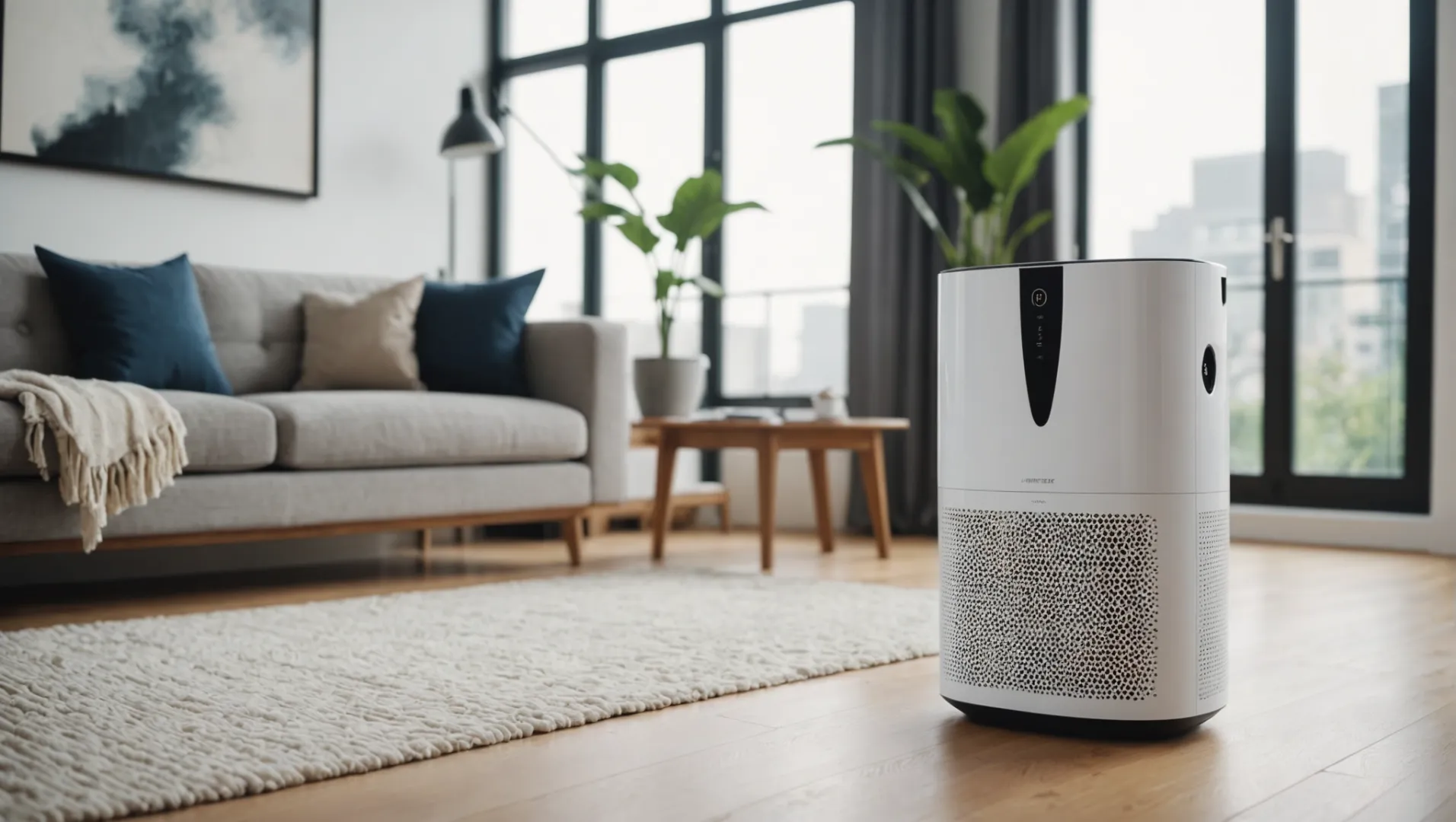
هل سبق لك أن شعرت أن الحساسية لديك أكثر من اللازم؟ فمع انتشار حبوب اللقاح في الخارج وتراكم الغبار في الداخل، غالباً ما أجد نفسي أبحث عن الراحة.
أجهزة تنقية الهواء المزودة بخاصية True HEPA يمكن للمرشحات إزالة الغبار والعفن والمواد الأخرى المسببة للحساسية بفعالية تصل إلى 99.97%. فهي تساعد في التخفيف من أعراض الحساسية من خلال التقاط الجسيمات المحمولة في الهواء التي يصل حجمها إلى 0.3 ميكرون، مما يجعلها استثماراً مفيداً لتحسين جودة الهواء الداخلي.
ولكن هناك ما هو أكثر من مجرد فعالية HEPA الفلاتر. إن فهم التقنيات المختلفة وتطبيقاتها يمكن أن يمكّنك من اتخاذ أفضل خيار لمنزلك. دعنا نتعمق أكثر في كيفية عمل أجهزة تنقية الهواء وما الذي يجب أن تضعه في اعتبارك عند شراء أحدها.
تلتقط فلاتر HEPA 99.97% من الجسيمات الصغيرة بحجم 0.3 ميكرون.صحيح
إن فلاتر HEPA الحقيقية معتمدة لالتقاط 99.97% من الجسيمات المحمولة في الهواء، بما في ذلك الغبار والعفن.
كيف HEPA هل تعمل الفلاتر في أجهزة تنقية الهواء؟
HEPA تشتهر الفلاتر بكفاءتها العالية في التقاط الجسيمات العالقة في الهواء، ولكن كيف تعمل بالضبط داخل أجهزة تنقية الهواء؟
HEPA تعمل المرشحات من خلال دفع الهواء عبر شبكة دقيقة تحبس الجسيمات الضارة مثل الغبار وحبوب اللقاح والعفن والبكتيريا. صحيح HEPA تلتقط الفلاتر جسيمات صغيرة تصل إلى 0.3 ميكرون بكفاءة تصل إلى 99.97%، مما يجعلها فعالة للغاية في تحسين جودة الهواء.
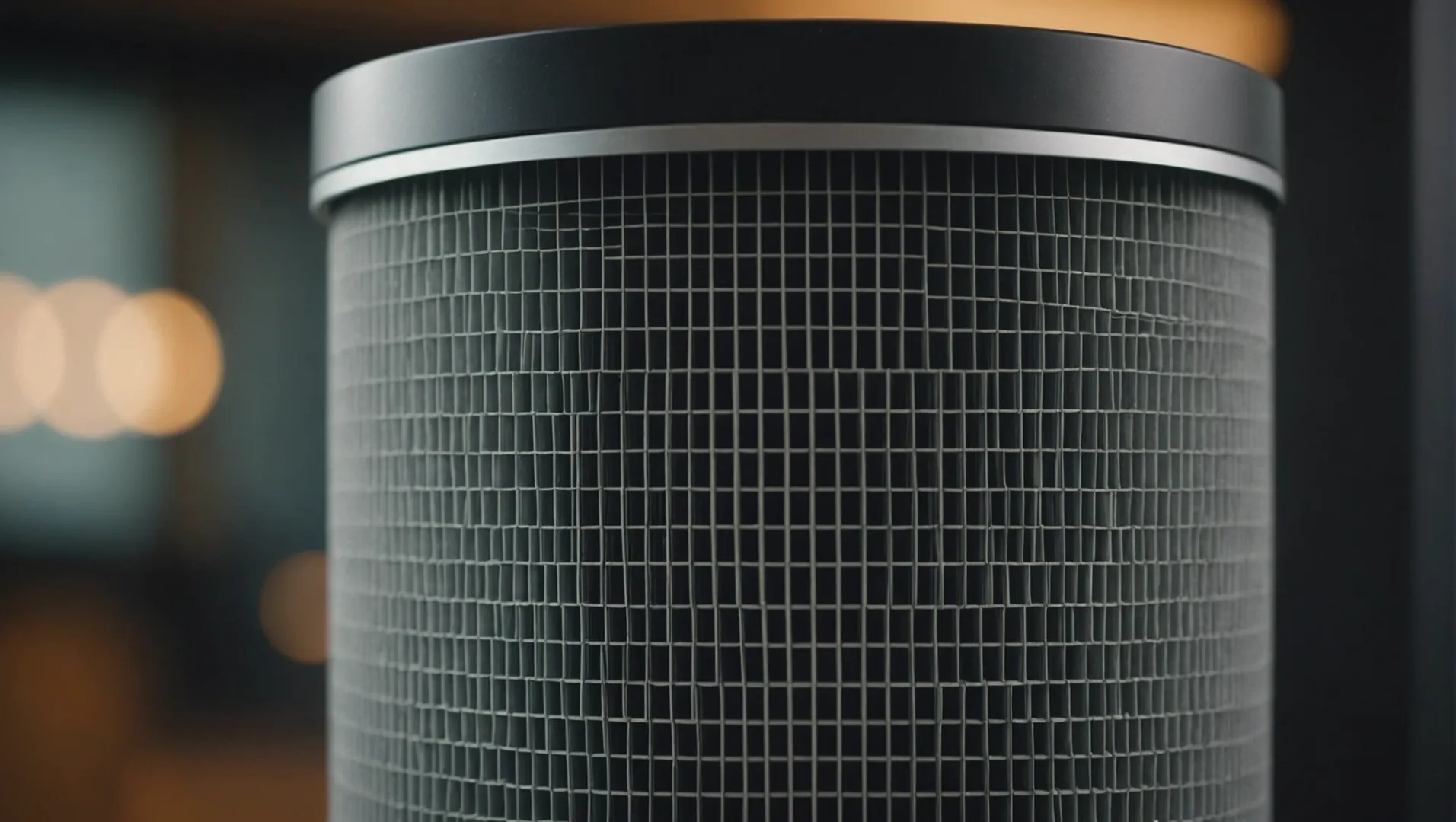
ميكانيكيات HEPA الفلاتر
HEPAأو هواء الجسيمات عالي الكفاءة، تعمل المرشحات عن طريق حبس الملوثات بعدة طرق: الاعتراض، والانحشار، والانتشار. أثناء مرور الهواء عبر المرشح:
- الاعتراض عندما تتبع الجسيمات تيار الهواء وتلتصق بالألياف.
- السحب يحدث عندما تصطدم الجسيمات الأكبر حجمًا بالألياف مباشرةً.
- الانتشار تؤثر على الجسيمات الأصغر، مما يتسبب في تحركها بشكل غير منتظم وفي النهاية تنحصر.
لماذا HEPA فعالة
التركيب الليفي الطبقي لطبقات HEPA تجعلها الفلاتر بارعة في التقاط أحجام الجسيمات المختلفة. يسمح لها هذا التصميم الفريد من نوعه بإزالة الغبار وجراثيم العفن وحبوب اللقاح وحتى بعض البكتيريا، وهي مسببات شائعة للحساسية.
على سبيل المثال، في حين أن صحيح HEPA الفلاتر1 معتمدة لالتقاط 99.97% من الجسيمات التي يبلغ قطرها 0.3 ميكرون، وليس كل HEPA-تفي المرشحات الشبيهة بهذا المعيار. إن فهم هذا التمييز أمر بالغ الأهمية عند اختيار جهاز تنقية الهواء.
اعتبارات عند الاختيار HEPA الفلاتر
عند التسوق لشراء جهاز لتنقية الهواء مع HEPA مرشح، ضع في اعتبارك:
- تكاليف استبدال الفلتر: يضمن الاستبدال المنتظم الأداء الأمثل.
- مستويات الضوضاء: قد يكون صوت بعض الموديلات أعلى في الإعدادات الأعلى.
- الحجم ومساحة التغطية: تأكد من أن جهاز تنقية الهواء يتناسب مع حجم غرفتك.
يمكن أن يساعد جدول المقارنة في توضيح هذه الاعتبارات:
| الميزة | الأهمية |
|---|---|
| استبدال المرشح | ضروري للحفاظ على الكفاءة |
| مستويات الضوضاء | ضع في اعتبارك ما إذا كان سيتم استخدام الوحدة في غرفة النوم |
| منطقة التغطية | يجب أن يناسب حجم الغرفة للاستخدام الفعال |
من خلال فهم هذه الجوانب، يمكن للمستهلكين اتخاذ قرارات مستنيرة عند شراء جهاز لتنقية الهواء لتلبية احتياجاتهم الخاصة.
تلتقط مرشحات HEPA 99.97% من الجسيمات عند 0.3 ميكرون.صحيح
مرشحات HEPA الحقيقية معتمدة لالتقاط هذه النسبة المئوية من الجسيمات الصغيرة.
تفي الفلاتر الشبيهة بـ HEPA بنفس معايير فلاتر HEPA الحقيقية.خطأ
لا تفي الفلاتر الشبيهة بـ HEPA بمعيار الكفاءة 99.97% لـ HEPA الحقيقي.
هل هناك تقنيات لتنقية الهواء غير فعالة في مكافحة العفن؟
ينطوي اختيار جهاز تنقية الهواء المناسب على فهم التقنيات الفعالة حقاً ضد العفن.
في حين أن HEPA تتفوق الفلاتر في التقاط جراثيم العفن، إلا أن تقنيات مثل مولدات الأوزون وبعض مصابيح الأشعة فوق البنفسجية ليست فعالة في إزالة العفن. قد لا تتصدى هذه التقنيات لجزيئات العفن بشكل كامل ويمكن أن تشكل مخاطر صحية في بعض الأحيان إذا لم تستخدم بشكل صحيح، مما يجعل HEPA مرشحات خيار أكثر موثوقية لمشاكل العفن.

فهم تقنيات تنقية الهواء
لمعالجة العفن بفعالية، من الضروري التمييز بين تقنيات أجهزة تنقية الهواء المختلفة وقدراتها. دعونا نستكشف التقنيات الأكثر شيوعًا وكيف تعمل ضد العفن.
-
HEPA الفلاتر
هواء الجسيمات عالي الكفاءة (HEPA) تشتهر المرشحات بقدرتها على التقاط الجسيمات المجهرية، بما في ذلك جراثيم العفن، بمعدل كفاءة يصل إلى 99.97%. وهي فعالة بشكل خاص لأنها تلتقط جسيمات صغيرة تصل إلى 0.3 ميكرون. وهذا يجعل HEPA-أجهزة تنقية الهواء المجهزة2 مثالية للأفراد الذين يتطلعون إلى معالجة العفن والمواد الأخرى المسببة للحساسية في منازلهم.
-
مولدات الأوزون
تدعي مولدات الأوزون أنها تعمل على تحييد الروائح والملوثات المحمولة جواً. ومع ذلك، لا يوصى باستخدامها مع العفن لأنها تعتمد في المقام الأول على التفاعلات الكيميائية التي لا تزيل جراثيم العفن بشكل كافٍ. وعلاوة على ذلك، يمكن أن يتسبب الأوزون في تهيج الجهاز التنفسي وتفاقم أعراض الربو.
-
الأشعة فوق البنفسجية (UV)
تتضمن بعض أجهزة تنقية الهواء تقنية الأشعة فوق البنفسجية التي تهدف إلى تدمير الكائنات الدقيقة مثل البكتيريا والفيروسات. وفي حين أن العديد من مصابيح الأشعة فوق البنفسجية في أجهزة تنقية الهواء الاستهلاكية ليست فعالة في ظروف معينة، إلا أن العديد من مصابيح الأشعة فوق البنفسجية في أجهزة تنقية الهواء الاستهلاكية ليست قوية بما يكفي للقضاء على جراثيم العفن تمامًا دون التعرض لها لفترة طويلة، مما يجعلها أقل فعالية مقارنةً ب HEPA المرشحات.
-
فلاتر الكربون المنشط
الكربون المنشط ممتاز في إزالة الروائح الكريهة و المركبات العضوية المتطايرة (مركبات عضوية متطايرة) ولكنه لا يلتقط جراثيم العفن بشكل فعال. الجمع بين الكربون المنشط مع HEPA يمكن للترشيح أن يحسّن جودة الهواء ولكنه لن يعالج مشاكل العفن وحده.
-
أجهزة تنقية الهواء الأيونية
تطلق هذه الأجهزة أيونات مشحونة تلتصق بالجسيمات المحمولة في الهواء، مما يجعلها تستقر على الأسطح بدلاً من استنشاقها. على الرغم من أنها قد تقلل من الغبار المحمول في الهواء، إلا أنها لا تفعل الكثير للقضاء على جراثيم العفن مباشرةً وتتطلب تنظيفاً منتظماً لمنع إعادة تعليق الجسيمات.
اتخاذ خيارات مستنيرة
عند اختيار جهاز تنقية هواء، أعط الأولوية لأجهزة تنقية الهواء التي تحتوي على True HEPA الفلاتر إذا كان اهتمامك الأساسي هو إزالة العفن. بالإضافة إلى ذلك، ضع في اعتبارك الموديلات التي تجمع بين HEPA مع تقنيات أخرى، مثل الكربون المنشط، لتحسين جودة الهواء على نطاق أوسع. تذكّر أن كفاءة جهاز تنقية الهواء تعتمد أيضاً على صيانته المناسبة وحجم المنطقة التي يستهدفها. سيساعدك تقييم هذه العوامل في اتخاذ الخيار الأفضل3 لاحتياجاتك
تلتقط مرشحات HEPA 99.97% من جراثيم العفن.صحيح
تحبس فلاتر HEPA الجسيمات الصغيرة حتى 0.3 ميكرون، بما في ذلك جراثيم العفن.
تزيل مولدات الأوزون جراثيم العفن بفعالية.خطأ
لا تزيل مولدات الأوزون جراثيم العفن بشكل كافٍ ويمكن أن تسبب مخاطر صحية.
ما هي الميزات التي يجب أن تبحث عنها في جهاز تنقية الهواء؟
إن اختيار جهاز تنقية الهواء المناسب يمكن أن يؤثر بشكل كبير على جودة الهواء الداخلي، ولكن ما هي الميزات التي يجب أن تعطيها الأولوية؟
عند اختيار جهاز تنقية الهواء، أعط الأولوية لميزات مثل True HEPA المرشحات, CADR التصنيفات ومستويات الضوضاء والقدرات الذكية لضمان الأداء الأمثل والراحة.
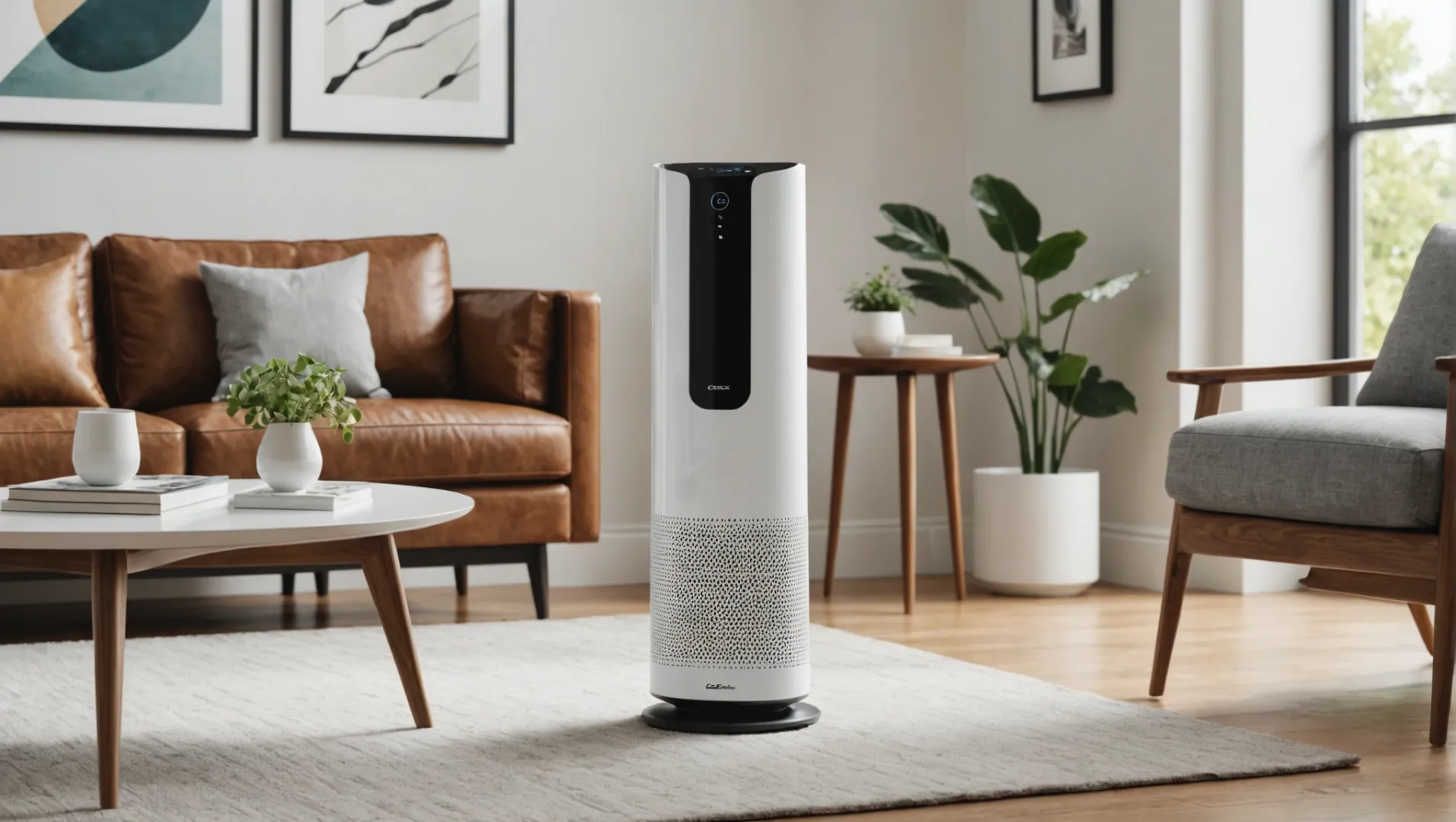
صحيح HEPA الفلاتر: المعيار الذهبي
صحيح HEPA تشتهر فلاتر (هواء الجسيمات عالية الكفاءة) بقدرتها على التقاط 99.97% من الجسيمات الصغيرة التي لا يتجاوز حجمها 0.3 ميكرون. وهذا ما يجعلها فعالة للغاية ضد الغبار وحبوب اللقاح وجراثيم العفن وغيرها من مسببات الحساسية. عند التسوق لشراء جهاز لتنقية الهواء، تأكد من أنه يحدد "True HEPA" لضمان أفضل ترشيح.
CADR التقييمات: فهم الأداء
معدل توصيل الهواء النظيف (CADR) هو مقياس حيوي يشير إلى حجم الهواء النظيف الذي ينتجه جهاز تنقية الهواء في الدقيقة الواحدة. أعلى CADR تعني التقييمات تنظيفاً أسرع للمساحات الكبيرة. ابحث عن الموديلات ذات CADR لضمان تنقية الهواء بكفاءة. ضع في اعتبارك الاحتياجات المحددة للمساحة الخاصة بك عند تقييم هذه التصنيفات.
| الملوثات | موصى به CADR |
|---|---|
| دخان | 100+ |
| الغبار | 200+ |
| حبوب اللقاح | 300+ |
مستويات الضوضاء: الحفاظ على الهدوء
قد تكون الضوضاء عاملاً مهماً، خاصة في غرف النوم أو أماكن العمل. بعض أجهزة تنقية الهواء تعمل بهدوء، في حين أن البعض الآخر قد يكون أكثر تطفلاً. تحقق من مستويات الديسيبل (ديسيبل) التي تقدمها الشركات المصنعة. يمكن أن تكون الموديلات التي تحتوي على "وضع السكون" أو تلك المصممة للتشغيل الهادئ مفيدة للبيئات الحساسة.
قدرات ذكية: الراحة في متناول يدك
غالبًا ما تأتي أجهزة تنقية الهواء الحديثة مزوّدة بميزات ذكية مثل اتصال Wi-Fi والتحكم بالتطبيق والتوافق مع المساعد الصوتي. تسمح لك هذه الميزات بمراقبة جودة الهواء وضبط الإعدادات عن بُعد وجدولة العمليات وفقًا لاحتياجاتك. توفر هذه الميزات الراحة وتضمن تشغيل جهاز تنقية الهواء بكفاءة.
التقنيات الإضافية: ما يصلح وما لا يصلح
بينما صحيح HEPA الفلاتر ضرورية، تتضمن بعض أجهزة تنقية الهواء تقنيات إضافية مثل الأشعة فوق البنفسجية أو المؤينات. ومع ذلك، لا تكون هذه التقنيات فعالة دائماً ضد جميع أنواع الملوثات. على سبيل المثال، الأشعة فوق البنفسجية أقل فعالية ضد جراثيم العفن والمواد المسببة للحساسية. قيّم ضرورة وفعالية هذه الميزات الإضافية قبل اتخاذ القرار.
لإجراء عملية شراء مستنيرة، فكّر في استكشاف HEPA مقارنة كفاءة الفلتر4 و الأفضل CADR-أجهزة تنقية الهواء المصنفة5 للحصول على رؤى مفصلة حول هذه الجوانب الحاسمة.
تلتقط فلاتر HEPA الحقيقية 99.97% من جسيمات 0.3 ميكرون.صحيح
تم تصميم فلاتر HEPA الحقيقية لالتقاط الجسيمات الصغيرة جدًا بفعالية.
الأشعة فوق البنفسجية في أجهزة تنقية الهواء فعالة للغاية ضد العفن.خطأ
الأشعة فوق البنفسجية أقل فعالية ضد جراثيم العفن ومسببات الحساسية.
هل يمكن أن تساعد أجهزة تنقية الهواء في التخلص من وبر الحيوانات الأليفة وعث الغبار؟
يمكن أن يؤدي وبر الحيوانات الأليفة وعث الغبار إلى الإصابة بالحساسية، مما يجعل الكثيرين يتساءلون عما إذا كانت أجهزة تنقية الهواء يمكن أن توفر الراحة.
أجهزة تنقية الهواء مع True HEPA تتميز الفلاتر بفعاليتها في التقاط وبر الحيوانات الأليفة وعث الغبار، مما يقلل بشكل كبير من مسببات الحساسية في المنزل. تعمل أجهزة تنقية الهواء هذه على تحسين جودة الهواء وتساعد في التخفيف من أعراض الحساسية المرتبطة بالحيوانات الأليفة والغبار، وذلك من خلال التقاط جسيمات صغيرة تصل إلى 0.3 ميكرون.
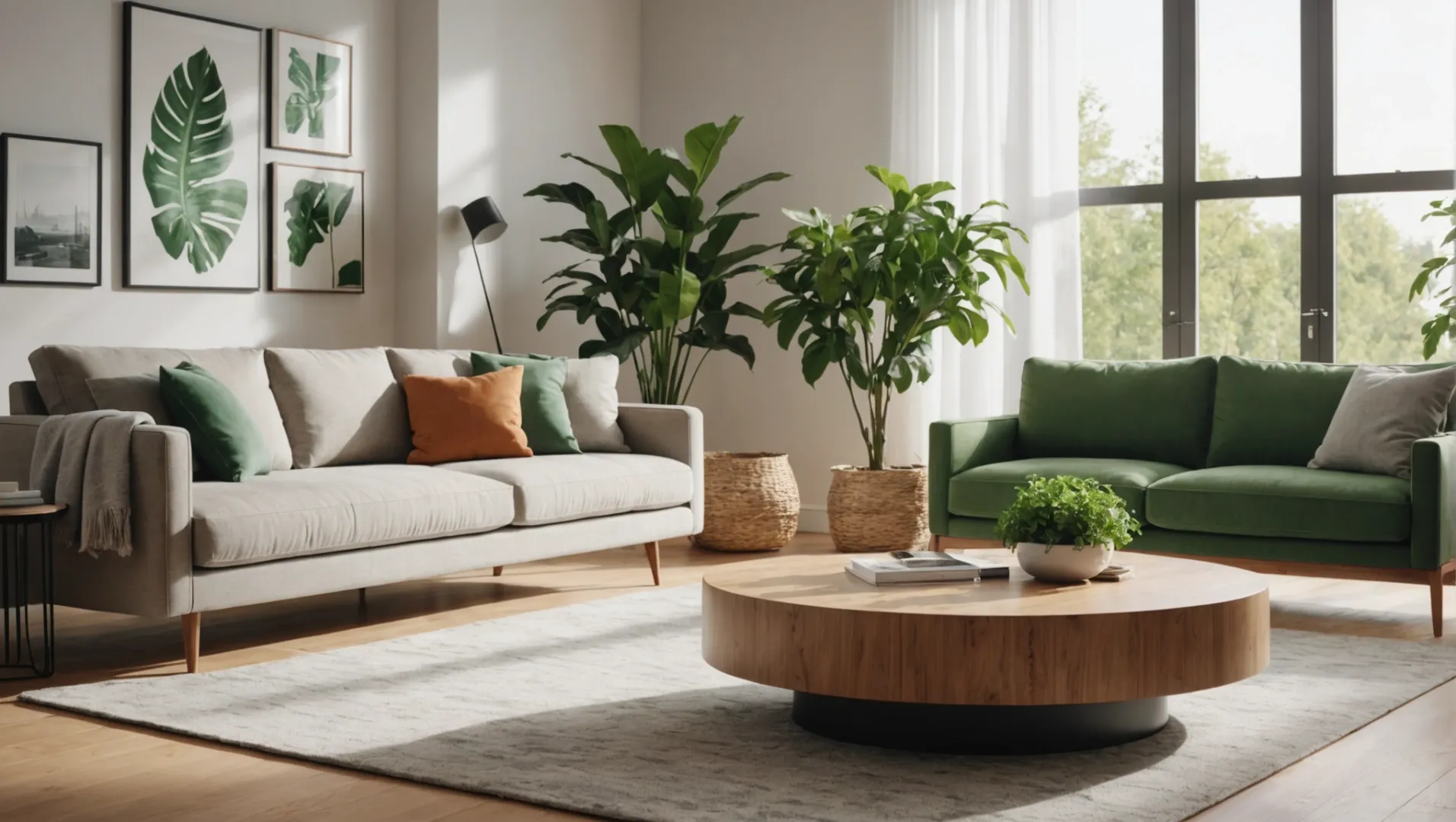
فهم وبر الحيوانات الأليفة وعث الغبار
يتكون وبر الحيوانات الأليفة من بقع جلدية صغيرة، بل مجهرية، تتساقط من القطط والكلاب والقوارض والطيور والحيوانات الأخرى ذات الفراء أو الريش. أما عث الغبار، من ناحية أخرى، فهي كائنات مجهرية تنمو في البيئات الدافئة والرطبة وتتغذى على خلايا جلد الإنسان. كلاهما من مسببات الحساسية الشائعة التي يمكن أن تؤدي إلى تفاقم أعراض الربو والحساسية.
دور HEPA الفلاتر
هواء الجسيمات عالي الكفاءة (HEPA) مصممة لالتقاط 99.97% من الجسيمات التي يبلغ حجمها 0.3 ميكرون أو أكبر. ويشمل ذلك وبر الحيوانات الأليفة وبقايا عث الغبار. باستخدام أجهزة تنقية الهواء المزودة ب HEPA الفلاتر، يمكنك تقليل تركيز هذه المواد المسببة للحساسية في منزلك بشكل كبير.
المزايا:
- تخفيف الحساسية: الاستخدام المنتظم لـ صحيح HEPA جهاز تنقية الهواء6 يمكن أن يقلل من أعراض الحساسية عن طريق التقاط شعر الحيوانات الأليفة وجزيئات عث الغبار المحمولة في الهواء.
- تحسين جودة النوم: يؤدي انخفاض مسببات الحساسية إلى تحسين ظروف التنفس ليلاً، مما قد يحسن من جودة النوم.
اعتبارات إضافية
في حين أن HEPA تلتقط الفلاتر بفعالية وبر الحيوانات الأليفة وعث الغبار، إلا أنها لا تستطيع التخلص منها تماماً من بيئتك. إن إجراءات التنظيف الروتينية المنتظمة، مثل التنظيف بالمكنسة الكهربائية باستخدام HEPA-المكنسة الكهربائية المفلترة وغسل الفراش بشكل متكرر، واستكمال استخدام أجهزة تنقية الهواء.
بالإضافة إلى ذلك، ضع في اعتبارك أجهزة تنقية الهواء المزودة بمرشحات الكربون المنشط لمعالجة الروائح المرتبطة بالحيوانات الأليفة. يمكن لهذا المزيج تحسين جودة الهواء الداخلي بشكل عام.
اختيار جهاز تنقية الهواء المناسب
عند اختيار جهاز تنقية الهواء لمعالجة وبر الحيوانات الأليفة وعث الغبار، ابحث عن الميزات التالية:
- صحيح HEPA التصديق: يضمن استيفاء الفلتر للمعايير الصارمة لإزالة الجسيمات.
- معدل توصيل الهواء النظيف (CADR): يشير إلى حجم الهواء المنقّى في الدقيقة الواحدة؛ الأرقام الأعلى تعني تنظيفاً أسرع.
- منطقة التغطية: طابق سعة جهاز تنقية الهواء مع حجم غرفتك للحصول على الأداء الأمثل.
من خلال فهم كيفية أجهزة تنقية هواء مختلفة7 تعمل وفعاليتها، يمكنك اتخاذ قرارات مستنيرة لتحسين بيئتك الداخلية.
تلتقط فلاتر HEPA الحقيقية 99.97% من الجسيمات بحجم 0.3 ميكرون أو أكبر.صحيح
تم تصميم فلاتر HEPA لحجز كل الجسيمات بهذا الحجم تقريباً، بما في ذلك المواد المسببة للحساسية.
تقضي أجهزة تنقية الهواء المزودة بفلاتر HEPA على كل وبر الحيوانات الأليفة.خطأ
على الرغم من فعالية فلاتر HEPA، إلا أنها لا تستطيع إزالة كل وبر الحيوانات الأليفة من البيئة بشكل كامل.
الخاتمة
الاستثمار في الجودة HEPA يمكن لجهاز تنقية الهواء تحسين جودة الهواء الداخلي بشكل كبير عن طريق إزالة الغبار والعفن والمواد المسببة للحساسية. ضع في اعتبارك التكنولوجيا والشهادة للحصول على أفضل النتائج. ابدأ بالتنفس بشكل أنظف اليوم!
-
تعرف على كيفية اختلاف فلاتر True HEPA عن المتغيرات الأقل شبهاً بـ HEPA..: تتميز فلاتر True HEPA بالتقاط 99.97% من الجسيمات التي يصل حجمها إلى 0.3 ميكرون باستمرار، مما يجعلها الخيار الواضح للتطبيقات الحرجة مثل الجراحة ... ↩
-
افهم كيف تلتقط فلاتر HEPA جراثيم العفن بفعالية: أظهرت الدراسات أن فلاتر HEPA تزيل ما بين 99.97% إلى 99.99% من جراثيم العفن من الهواء عند استخدامها بشكل صحيح. أي جراثيم العفن التي تحاصر ... ↩
-
تعرّف على الاعتبارات الأساسية لاختيار جهاز فعال لتنقية الهواء....: ما هو جهاز تنقية الهواء؟ - ضع في اعتبارك حجم مساحتك - ضع في اعتبارك أنواع الفلاتر - ضع في اعتبارك مقدار الضوضاء التي يصدرها جهاز تنقية الهواء - ضع في اعتبارك صيانته ... ↩
-
فهم الاختلافات في كفاءة مرشحات HEPA وتأثيرها على جودة الهواء: تم اختبارها واعتمادها لالتقاط ما لا يقل عن 99.97% من الجسيمات الصغيرة التي لا يقل حجمها عن 0.3 ميكرون. من ناحية أخرى، "شبيهة HEPA" أو "من نوع HEPA" ... ↩
-
استكشف أجهزة تنقية الهواء عالية الأداء مع تصنيفات CADR الممتازة للحصول على هواء أنظف: تمتلك Medify وجاسبر بعضاً من أعلى معدلات CADR. ↩
-
تعرف على كفاءة مرشحات True HEPA وفوائدها في إزالة مسببات الحساسية: تدوم مرشحات HEPA الحقيقية لفترة أطول ويمكنها العمل 24 ساعة في اليوم، 365 يوماً في السنة. يمكنك التخلص بفعالية من الغبار ووبر الحيوانات الأليفة وحبوب اللقاح والعفن والبكتيريا ... ↩
-
اكتشف أفضل موديلات أجهزة تنقية الهواء لمعالجة الحساسية من وبر الحيوانات الأليفة: أفضل 8 أجهزة لتنقية الهواء من شعر الحيوانات الأليفة وروائحها ووبرها، وفقاً لاختباراتنا. تتضمن قائمتنا أفضل العلامات التجارية مثل Dyson و Bissell و Levoit. ↩



